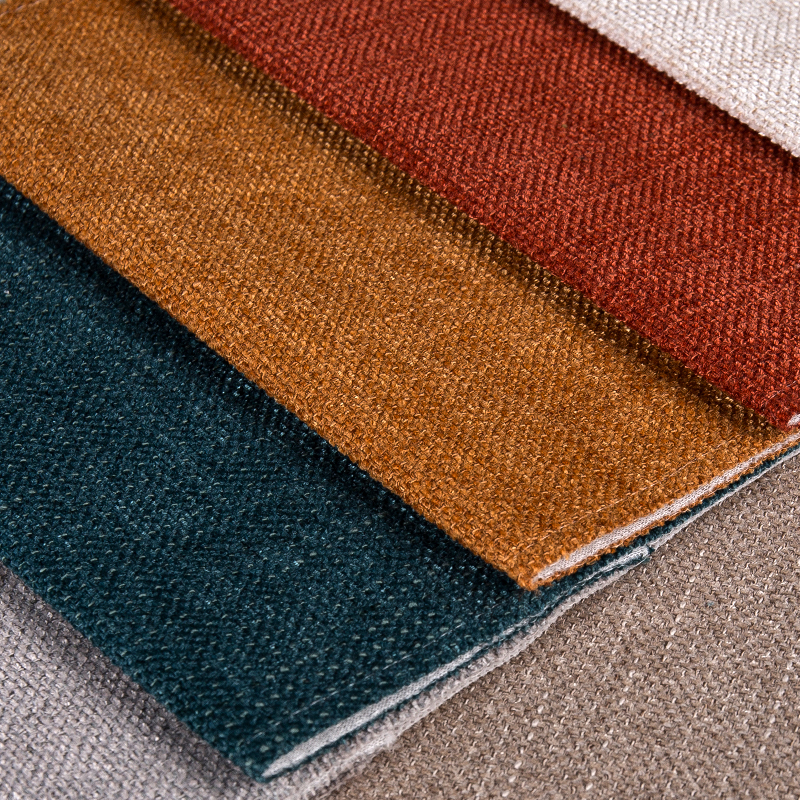Feb 14, 2025
Enhancing the colorfastness and fade resistance of chenille sofa fabrics during dyeing and finishing involves several measures that ensure the dyes bond well with the fibers and resist fading due to exposure to sunlight, washing, or other environmental factors. Below are some key techniques and processes used:
Selection of High-Quality Dyes
Fiber-Reactive Dyes : These dyes form a covalent bond with the fibers, providing excellent colorfastness and resistance to fading.
Disperse Dyes : For synthetic fibers like polyester, disperse dyes are used as they penetrate the fibers effectively and offer good lightfastness.
Vat Dyes : Known for their high resistance to fading, vat dyes are often used for natural fibers like cotton.
Proper Pre-Treatment of Fibers
Scouring : The fabric is treated with detergents or alkaline solutions to remove impurities such as oils, waxes, and dirt, ensuring better dye uptake.
Mercerization (for cotton): This process improves the luster and strength of cotton fibers while enhancing dye absorption and colorfastness.
Desizing : Removing sizing agents applied during weaving to ensure even dye penetration.
Optimal Dyeing Conditions
Temperature Control : Maintaining the correct temperature during dyeing ensures proper dye fixation. For example, reactive dyes often require higher temperatures for optimal bonding.
pH Adjustment : The pH of the dye bath is carefully controlled to optimize dye performance and fiber-dye interaction.
Time Management : Ensuring sufficient time for the dye to penetrate and fix onto the fibers is crucial for achieving durable coloration.

Use of Fixatives
Dye Fixatives : Chemicals such as cationic polymers can be applied after dyeing to improve colorfastness by forming a protective layer around the dyed fibers.
UV Absorbers : Special additives can be incorporated into the finishing process to absorb ultraviolet (UV) light, reducing photodegradation and fading caused by sunlight.
Heat Setting
Synthetic fibers like polyester are often heat-set after dyeing to stabilize the molecular structure of the fibers and improve colorfastness to washing and dry cleaning.
Application of Softeners and Finishing Agents
Softeners : These improve the hand feel of the fabric without compromising colorfastness.
Anti-Fade Finishes : Special finishes can be applied to enhance resistance to light and wash fading.
Testing for Colorfastness
Lightfastness Testing : Exposing samples to artificial UV light to assess how well the colors withstand prolonged sunlight exposure.
Wash Fastness Testing : Simulating multiple wash cycles to evaluate the fabric's ability to retain its color.
Rubbing Fastness Testing : Assessing the fabric’s resistance to color transfer when rubbed against other surfaces.
Coating or Lamination
In some cases, a protective coating or lamination may be applied to the fabric surface to shield it from external factors like UV radiation and abrasion.
Environmental Considerations
Using eco-friendly dyes and chemicals that not only enhance colorfastness but also minimize environmental impact.